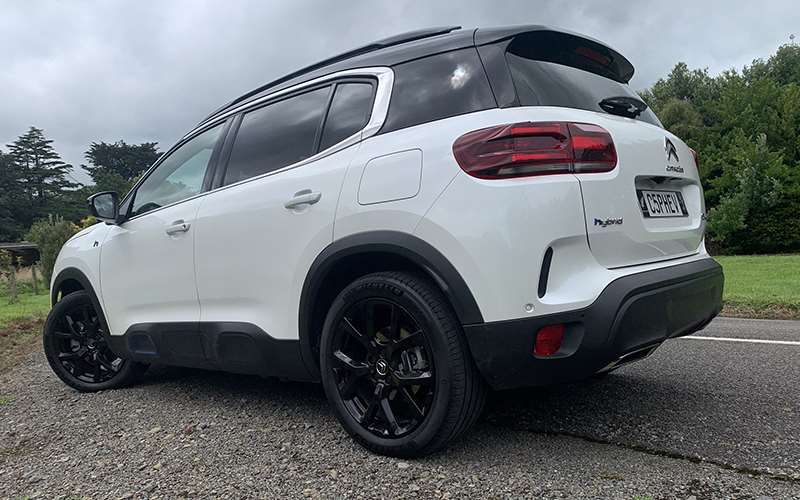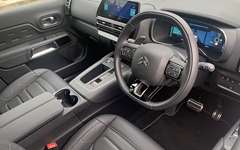A new Citroen demonstrates the benefits of plug-in hybrids, Richard Bosselman writes.
The argument for going to a plug-in hybrid is outwardly persuasive, as a half-way point technology that’s a good option for anyone who’s not ready to go fully electric. It gives the benefit of electric on short drives, with the flexibility of a fossil fuel engine for long runs.
Good theory. The reality is a bit more complex, as real-world tests suggesting official laboratory tests could be dramatically understating emissions from plug-in hybrid technology.
Used properly with electric as the primary power source and combustion as a back-up, and you can see some spectacularly positive outcomes. This occurred on test with the Citroen C5 Aircross PHEV.
Conversely, become neglectful by depleting the battery and operate in an environment that is taxing on the drivetrain, and the petrol engine will drink quite a lot harder and lose refinement as it hauls a car that includes an inactive but heavy electric system.
That happened on test, too.
Overall consumption of 7.7 litres per 100km during Drivesouth’s time with the car was a world away from the 1 litre per 100km optimal Citroen claims from WLTP assessment, yet it was was still superior to the cited thrift from the pure petrol Aircross on the same test.
The Aircross PHEV combines a 1.6-litre, turbo petrol engine that also powers the conventional Aircross with a 13.2kW battery and electric motor. Power elevates from the 133kW of the pure petrol to 165kW (combined). Meantime, the added kit raises kerb weight by 340kg, so it’s just shy of 1.8 tonnes.
Citroen’s claim of it delivering 47km electric-only driving range seems optimistic; the best I saw was 42km. Replenishment at home on a 7.4kW wall box takes two hours; if you rely on a regular domestic socket, that’ll stretch to up to seven.
When the car starts it generally defaults to pure electric and stays that way until otherwise instructed. The EV priority is great for quiet getaways yet, with a brief 100kmh involvement occurring early in my daily driving route, a switch from electric to hybrid mode was logical intervention. The drivetrain worked stronger without abdicating much thrift.
As well as making for slightly more sprightly and smoother involvement, keeping the battery fed does make the car cheaper by far to run.
Mind you, with a $79,990 tag that just squeezes the C5 PHEV into rebate territory, it’s not a cheap car to access.
You could get stuck on that, or you could just see it as a good solution for wider reasons; one being that it exudes a level of suaveness in appearance and attitude that you don’t get from most rivals.
A decent dollop of styling drama is always part of the PSA playbook; these days there’s just no such thing as a dull-looking French car. Within its clique Citroen is the extrovert and quirkiness is also a trademark. That all fuels a distinctive exterior aesthetic, the curvy styling, sharp grille and distinctive lights are the big points of difference but even just having Airbumps bubble wrap the lower bodywork, to protect against the biffs of urban life, help ensure it is an easy car to pick in a crowd.
Standard driver assistance and active safety technologies include low-speed autonomous emergency braking, blind-spot monitoring, lane departure warning, hill-start assist, driver attention monitoring, an automated self-parking assistant and speed sign recognition.
The Aircross also features Citroen’s Advanced Comfort programme, which configures suspension with Progressive Hydraulic Cushions and also Advanced Comfort seats.
The latter translates to seats whose structure contains specially tuned foam, and they present as a pair of very nicely contoured chair-like front seats that impress with their long-distance comfort, offering good back and thigh support, along with a decent amount of adjustment for the driver. Equally impressive, the rear seats aren’t a second-class option, as some are. The three seating spots there are of equal comfort.
The tall roofline and a panoramic glass roof being part of this package too means there’s a feeling of enhanced space and airiness. Visibility is great, thanks to the large glasshouse, bar the rear window which is a little skinny. Standard blind-spot monitoring and a decent rear-view camera counter any over-the-shoulder visibility quirks.
The interior design is as eye-catching as the bodywork. Just on the edge of plush, but thoughtfully falling short of utter poshness because, well . . . what would be the point when practicality is really the primary reason for purchase?
The whole car seems attuned to family life, with sensible touches everywhere — from good-sized cupholders to plenty of storage in the cabin, including in the doors — and hard-wearing materials in all the right places.
Having rear seats that can slide, fold or recline individually to prioritise legroom or luggage space as you need is a strong plus. There’s 580 litres of boot space in and the load bay is a practical shape; it’s a shame, though, that rather than deliver an underfloor location for the charging cables, they have a ‘‘cake tin’’ style holder velcroed to the boot floor. Another moan is that the power operated tailgate is a little low when open; as a tall person, I had to watch out to avoid smacking my forehead against the edge of the bootlid.
The Progressive Hydraulic Cushion suspension design might sound as off-the-wall as the hydro-pneumatic system that now resides only in the brand’s museum collection, but it’s actually a wholly different idea, though no less innovative.
On the one side, it is tied to Citroen’s thinking about what most SUVs do. Which isn’t to go off road. While it claims a healthy ground clearance, the C5 Aircross is not imagined as an ardent off-seal warrior, so four-wheel drive isn’t even on the options list.
Instead, it has Grip Control, effectively a traction control system that adjusts to suit different terrain and will be fine for the usual low-risk conditions.
This approach allows Citroen to address the bugbear it has with crossovers and SUVs; this being that many suffer in terms of ride comfort. It’s the cost of them running big wheels — which this car still has, with 19-inch rims — and stiff suspension to stop them rolling about in the corners.
Given that it’s not a car for rugged outdoor pursuits, it might seem ironic that Citroen’s remedy is drawn from tech it developed for the competition cars it once ran with huge success in World Rally Championship; fluid-filled cushions within the suspension construct. While the C5 system isn’t of course tailored have to cope with Loeb-level smashing over massive jumps at 200kmh, it is there to smooth away the impacts of potholes and speed bumps without any banging or crashing.
It works very effectively and, most impressively, comes up aces at open road pace; it’s hard to think of another car in its category that is as impressively smooth and serene at 100kmh over scruffy surfaces as the C5 Aircross.
Sure, there’s some roll through the corners, but this is a family car, not a hot hatch. All in all, for ride it delivers a refreshing change and while the focus on comfort and refinement means it’s not the sharpest car to drive, it doesn’t sacrifice alertness as much as you might think. The steering is light, but there is ample precision and the car changes direction predictably, with enough grip and composure.
Interestingly Citroen elected to make this derivative front-drive only to keep the price down, whereas Peugeot offers the 3008 sister model with a more expensive system with four-wheel-drive via an extra rear-mounted motor that is rather more expensive still.
Fact is, though, a C5 Aircross with all the same practical attributes and dynamics but with a petrol engine can be bought for $21k less than the PHEV, which at its pricing is also mixing against a variety of fully electric cars of similar size. The base Ford Mustang
Mach-e, two versions of Kia EV6, one of the Hyundai Ioniq 5 and Ioniq 6 stand out.
The Clean Car discount is greater for those than it is for the Citroen. On that note, too, while the C5 PHEV earns a $5,750 Government cheque, even the pure ICE one is frugal and clean enough to achieve a $1,200 rebate.
The ‘‘best return’’ scenarios here are potentially convenience and reassurance for long trips into unfamiliar territory and, for those who rarely drive more than 50km a day, a way to drive electric without limitations. As is common with PHEVs, making sense of the cost impacts, pros and cons, here requires significant calculus and no shortage of head-scratching.
- Richard Bosselman










